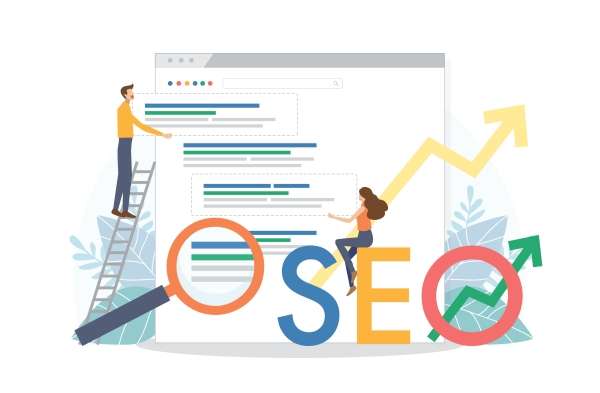
Google’s Algorithm Evolution: How Your Business Can Stay Ahead of the Game
Google’s algorithm is the set of rules and processes that determine the order and relevance of search results on Google’s search engine. It is a complex system that takes into account various factors, such as keyword usage, backlinks, and user behaviour, to provide users with the most accurate and useful information possible. As a result, understanding and optimising for Google’s algorithm is crucial for businesses looking to improve their online visibility and drive traffic to their websites.
Staying ahead of the game in terms of SEO and online visibility means being aware of the latest developments and trends in Google’s algorithm and adjusting one’s strategy accordingly. This requires a deep understanding of how the algorithm works and what factors it prioritises, as well as the ability to analyse and interpret data to identify opportunities for improvement. By staying up-to-date and adapting to changes in the algorithm, businesses can maintain or improve their search engine rankings and increase their online visibility, ultimately leading to more leads, sales, and revenue.
The Evolution of Google’s Algorithm
Since its inception, Google’s algorithm has undergone significant transformations in response to changing user behaviours, advances in technology, and the evolving landscape of digital marketing. From simple keyword matching to sophisticated artificial intelligence and machine learning, Google’s algorithm has become increasingly complex and nuanced.
In its early days (1998-2000), Google’s algorithm relied heavily on basic keyword matching and relevancy. The algorithm analysed web pages based on the frequency and prominence of keywords used on the page. However, this simplistic approach was soon exploited by savvy marketers who stuffed their pages with keywords, leading to irrelevant and low-quality search results.
The Florida Update (2003) marked a significant turning point in the evolution of Google’s algorithm. Latent Semantic Analysis (LSA) was introduced, which allowed the algorithm to understand synonyms and related phrases, improving the accuracy of search results. Additionally, the update placed greater emphasis on content quality, rewarding sites with valuable and informative material.
Other notable updates:
- The Panda update (2011) focused on delivering high-quality, unique content while penalising low-quality sites with thin or duplicate content. This update forced content farms and low-quality sites to reform their strategies or face severe ranking penalties.
- The Penguin update (2012) targeted spammy links and improved link evaluation. It addressed issues such as keyword stuffing, cloaking, and other manipulative tactics that violated Google’s guidelines.
- With the Hummingbird update (2013), Google’s algorithm began to emphasise natural language processing and user intent. The goal was to better understand the context and meaning behind searches, providing more accurate and relevant results. This update laid the groundwork for future improvements in voice search optimisation.
- Integrating artificial intelligence and machine learning, RankBrain (2015) revolutionised Google’s algorithm. It enabled the algorithm to learn from user behaviour and adapt to new patterns and queries, improving its ability to handle ambiguous searches and retrieve relevant results.
- As mobile devices became ubiquitous, Google responded with the Mobile-First Index (2016). This update prioritised mobile-friendliness and responsive design, ensuring that mobile users received optimal search results.
- Core Web Vitals (2020), emphasises page experience and user satisfaction. It assesses factors such as loading times, interactivity, and visual stability to ensure that users receive a positive browsing experience.
- The link spam update (2022) was released for Google Search, utilising SpamBrain AI to detect and neutralise unnatural links and prevent spammy sites from influencing search results.
Throughout its evolution, Google’s algorithm has consistently sought to improve the search experience for users. Each update has addressed specific challenges and opportunities, refining the algorithm’s ability to deliver relevant and useful results. As technology continues to advance and user behaviours shift, it is likely that Google’s algorithm will continue to evolve, pushing businesses to innovate and adapt their digital marketing strategies to remain competitive.
Impact of Algorithm Updates on SEO
Google’s algorithm updates have had a significant impact on SEO strategies over the years. One of the most notable changes has been the decline of keyword stuffing and density. Once a popular tactic for boosting search engine rankings, keyword stuffing involved repeating keywords multiple times throughout a webpage’s content. However, this approach is no longer effective, as Google’s algorithms now favour content that is natural, informative, and engaging.
In the past, webmasters focused on accumulating as many links as possible. However, Google’s Penguin algorithm update put an end to this practice by penalising websites with low-quality or spammy links. Today, link building is all about quality and diversity, with webmasters focusing on building relationships with other reputable websites in their niche.
Technical SEO has also become more important in recent years. Google’s algorithms now prioritise websites that load quickly, are optimised for mobile devices, and have strong security protocols in place. As a result, webmasters must ensure that their websites are technically sound, with fast loading speeds, responsive design, and HTTPS certificates.
Google’s algorithms now take into account various UX (User Experience) signals, such as bounce rate, click-through rate, and dwell time, when determining search engine rankings. This means that webmasters must prioritise UX when designing their websites, ensuring that they are intuitive, easy to navigate, and provide valuable information to visitors.
Strategies for Staying Ahead of the Game
To succeed in SEO, it’s important to stay ahead of the game by continuously adapting to changing algorithms and best practices. One way to do this is by focusing on creating high-quality, relevant, and informative content that resonates with your target audience. This includes using natural language and long-tail keywords that your audience is likely to use when searching for information related to your products or services.
Another key aspect of SEO is building a strong backlink strategy through guest blogging, outreach, and public relations. This helps to establish your brand as an authority in your niche and increases your chances of ranking higher in search results. It’s also essential to ensure that your website is optimised for both users and search engines. This includes ensuring that your site loads quickly, is mobile-friendly and has an SSL certificate installed. Monitoring industry trends and adapting quickly to algorithm changes can help you stay ahead of the competition and capitalise on new opportunities.
Additionally, utilising tools like Google Analytics and Search Console can provide valuable insights into your website’s performance and help you identify areas for improvement. Investing in emerging technologies like structured data, AI, and machine learning can significantly enhance your SEO efforts and give you a competitive edge over your rivals. By following these strategies, you can stay ahead of the game in SEO and achieve long-term success in digital marketing.
The evolution of Google’s algorithm has had a significant impact on businesses and their online presence. With the constant updates and changes, it is crucial for your company to stay informed and adapt your SEO strategy in order to maintain your search engine rankings and reach the target audience. By understanding the key factors that influence Google’s algorithm, businesses can optimise their websites and digital marketing efforts to ensure they remain competitive.
The emphasis on machine learning and AI in recent algorithm updates highlights the importance of creating high-quality, relevant, and personalised content that resonates with users. As Google continues to refine its algorithms, businesses must prioritise the creation of valuable and informative content that meets the needs of their target audience. This not only improves your search engine rankings but also fosters trust and credibility with potential customers.
Increasing focus on local search and voice search means that your business must optimise its online presence for local keywords and ensure that your website is optimised for voice searches. By doing so, you can tap into the growing trend of local search and capitalise on the rising popularity of voice assistants like Siri, Alexa, and Google Assistant.
Ultimately, the evolution of Google’s algorithm underscores the need for businesses to be agile and responsive to changing consumer behaviour and technological advancements. By staying up-to-date with the latest developments and adjusting your digital marketing strategy accordingly, your business can maximise its online visibility, drive more traffic to your website, and ultimately increase conversions and revenue.







